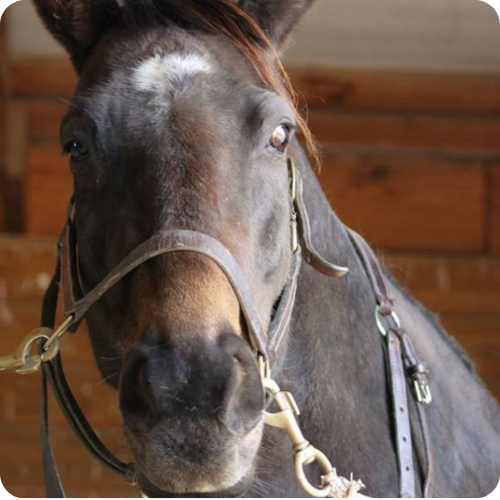
Gastric Ulcers in Horses
Call us today at 📞 434-973-7947
Collecting Equine Bone Marrow For Stem Cell Therapy
Does your horse have stomach ulcers? Is he crabby, girthy, or bucking after fences? Has he been colicking, losing weight, or refusing to eat his grain? Maybe his haircoat is poor, or he has lost impulsion. Or perhaps he appears to be in perfect health. Any and all of these issues can be due to ulcers in a horse’s stomach, and a large percentage of horses (especially those who perform as athletes) have ulcers. This is not surprising when the fact that nearly everything we ask horses to do (stand in stalls, eat grain, be ridden, ride on a trailer, spend periods of the day not eating, etc.) is a challenge to their normal digestive physiology, which evolved to support a constantly grazing animal that walks a lot and very occasionally runs very fast for a short period of time.
It is hard to know if the problems listed above are caused by equine ulcers or ulcers in a horse because they all have lots of other causes, too. The only way to know for sure if a horse has ulcers is to perform a gastroscopy (endoscopic examination of the stomach), which allows visual inspection of the entire stomach. This requires the stomach to be empty and provides information about the presence, location, and severity of ulcers in the horse.

It can also reveal other causes of stomach problems and provide a baseline image to which later exams can be compared for monitoring. Gastroscopy is well tolerated by horses and requires only moderate sedation to be performed. The biggest advantage of performing the scope, rather than just treating a horse, is that it confirms the presence or absence of ulcers and helps to guide treatment, whereas using response to treatment as a diagnostic tool can be misleading. Some ulcers may not respond to a standard dose of medication in the first weeks of treatment, so a medication trial abandoned after 7-10 days may give a false impression that ulcers are not the culprit. Also, severe ulcers may benefit from a combination of treatments.
Treatment of gastric ulcers in horses is pretty straightforward in most cases and involves suppressing the production of acid in the stomach. The drug omeprazole is the most effective drug for this in the horse and is available in an FDA-approved paste called GastroGard®. This product uses a patented technology to deliver the drug in enteric-coated microbeads, which protect the drug from neutralization in the stomach acid. Compounded (“generic”) omeprazole products have been demonstrated to be ineffective because of the effect of the gastric environment on the drug. Ranitidine is a medication that can also reduce the amount of acid in the stomach but must be administered every 8 hours to have an effect. For very severe, painful ulcers, a drug called sucralfate can be added to coat the ulcers, protect them, and speed healing.
Avoiding ulcers can involve the use of medications and supplements (UlcerGard®is the FDA approved product for this purpose, and is omeprazole given at a lower dose than for treatment), but be aware! Most of the products for sale to the horse owner have not been evaluated critically for efficacy and may not be helpful. Management changes that can benefit ulcer-prone horses include feeding alfalfa hay at the time of a grain meal, feeding smaller meals more frequently, giving the horse as much access to pasture turnout as possible, having forage available free choice, and sticking to a predictable routine.
Get Care
© Blue Ridge Equine Clinic | Privacy Policy | Terms of Service


